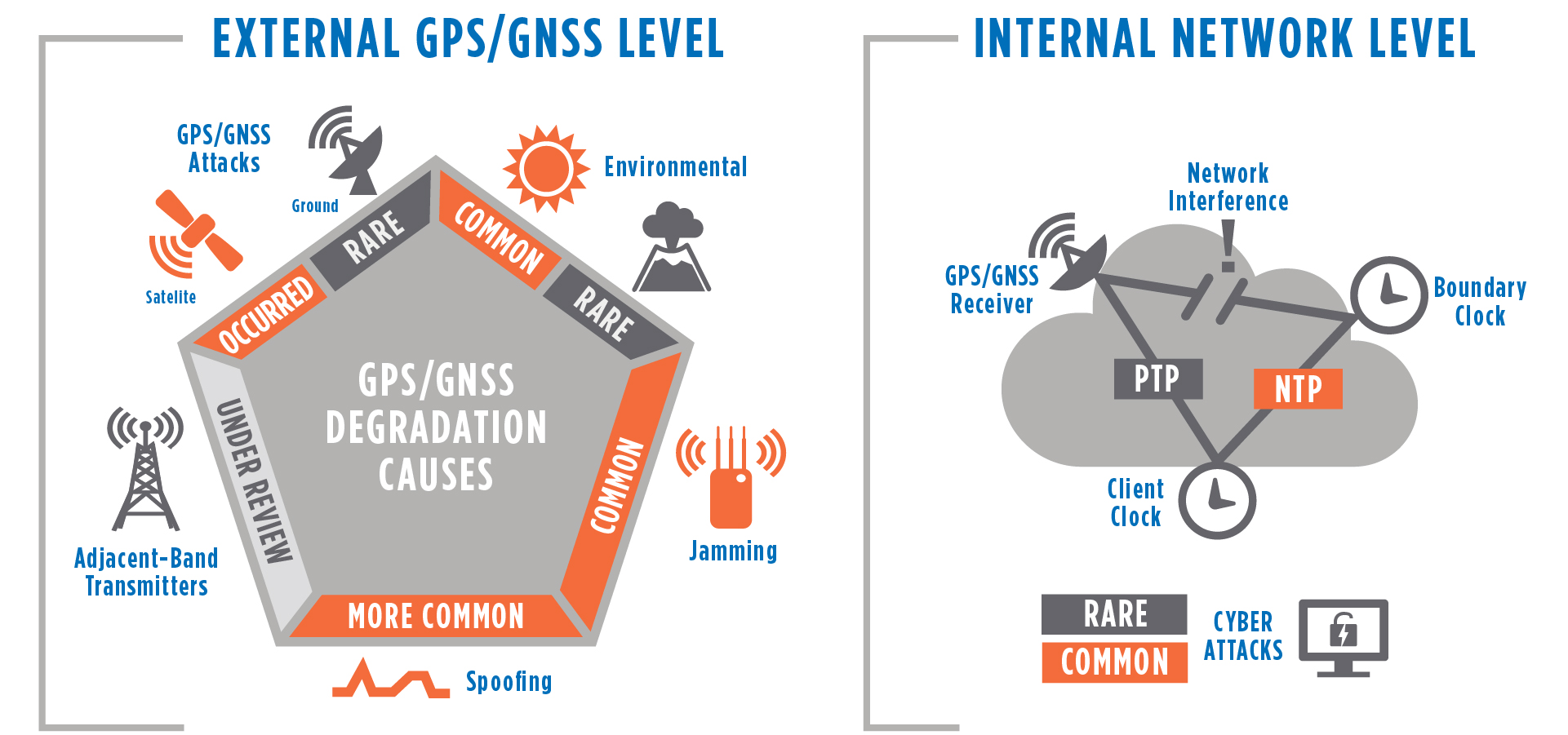Using a purely satellite-based source of time to synchronize substations creates significant risks. Any interruption to Global Navigation Satellite System (GNSS) signals could affect accuracy, negatively impacting the power grid’s operational integrity. In the worst case, this could lead to power outages.
Regulators classify power grids as critical infrastructure, and countries worldwide have begun distributing guidelines for making the PNT data they depend on fully redundant. In 2020, the U.S. government issued Executive Order 13905, which aims to strengthen national resilience through the responsible use of PNT services. The Department of Homeland Security (DHS) provided the framework of rules to harden the U.S. against interruptions caused by malicious actions. The DHS framework outlines four resiliency levels: from level 1, with only one source providing PNT data, through level 4, which involves a next-generation system deriving and distributing PNT from multiple sources. Additionally, a level 4 requirement is for systems to be able to operate for long periods without a GNSS- or ground-based timing source. This self-sustainability is critical for when signals are compromised. In addition to the DHS framework, an IEEE standard (P1952) on resilient PNT is currently in development.
The massive amount of data generated by distributed infrastructure, such as private solar panels and EV charging points, needs precise timestamping to effectively manage demand and supply. Historically, dedicated systems have provided timing at substations, using separate cabling and specific protocols. Such time code protocols deliver time information from a local clock that connects with each intelligent electronic device (IED). The time is coded as a digital data stream frequently supported by a pulse-per-second (1PPS) signal for precise alignment of the time code information. In many cases, GNSS is used for synchronizing the local time to a global reference.
Different timing protocols have their own benefits. Network time protocol (NTP) provides time of day (TOD) to substations that can be used to time stamp information such as event time or syslog time. Packet networks based on internet protocol (IP) and Ethernet are now widely available and largely use NTP for delivering time to substations and remote sites in a power grid. The one drawback of NTP is the lack of frequency and phase source; therefore, a protocol is still needed to provide frequency synchronization and phase synchronization. While GNSS-based timing can provide this frequency and phase accuracy, NTP cannot. Applications requiring synchronization of both frequency and phase need to use IEEE 1588 precision time protocol (PTP).
To accommodate the growing number of power grid elements requiring more precise timing, a shift must occur away from legacy NTP, which has millisecond accuracy needs, to PTP-based timing. By using PTP, with its sub-microsecond accuracy, a network can provide an elevated level of operational sophistication and higher accuracy in monitoring the power grid and localizing faults.
Circuit emulation in utility networks is a critical service that provides relay communication and, in some cases, SCADA backhaul. Frequency synchronization is critical for these services, as the time-division multiplexing (TDM) circuits require precise pulses to align the data and prevent bit slips, which lead to data corruption. Additionally, applications such as synchrophasors need accuracy better than 1 microsecond. For fault location, accuracy to 100 nanoseconds is required. The micro-PMU needs less than 1 microsecond, substation LAN communication protocols have to be time stamped at 100 microseconds for GOOSE IEC 61850, and 1 microsecond is required for IEC 61850 sample values. Should GNSS- or ground-based timing be compromised by deliberate attacks like jamming, spoofing or natural phenomena, accuracy in the aforementioned categories would still need to be maintained. Without highly accurate timing and frequency and phase synchronization from PTP, the smart grid is vulnerable to partial outages and blackouts.


